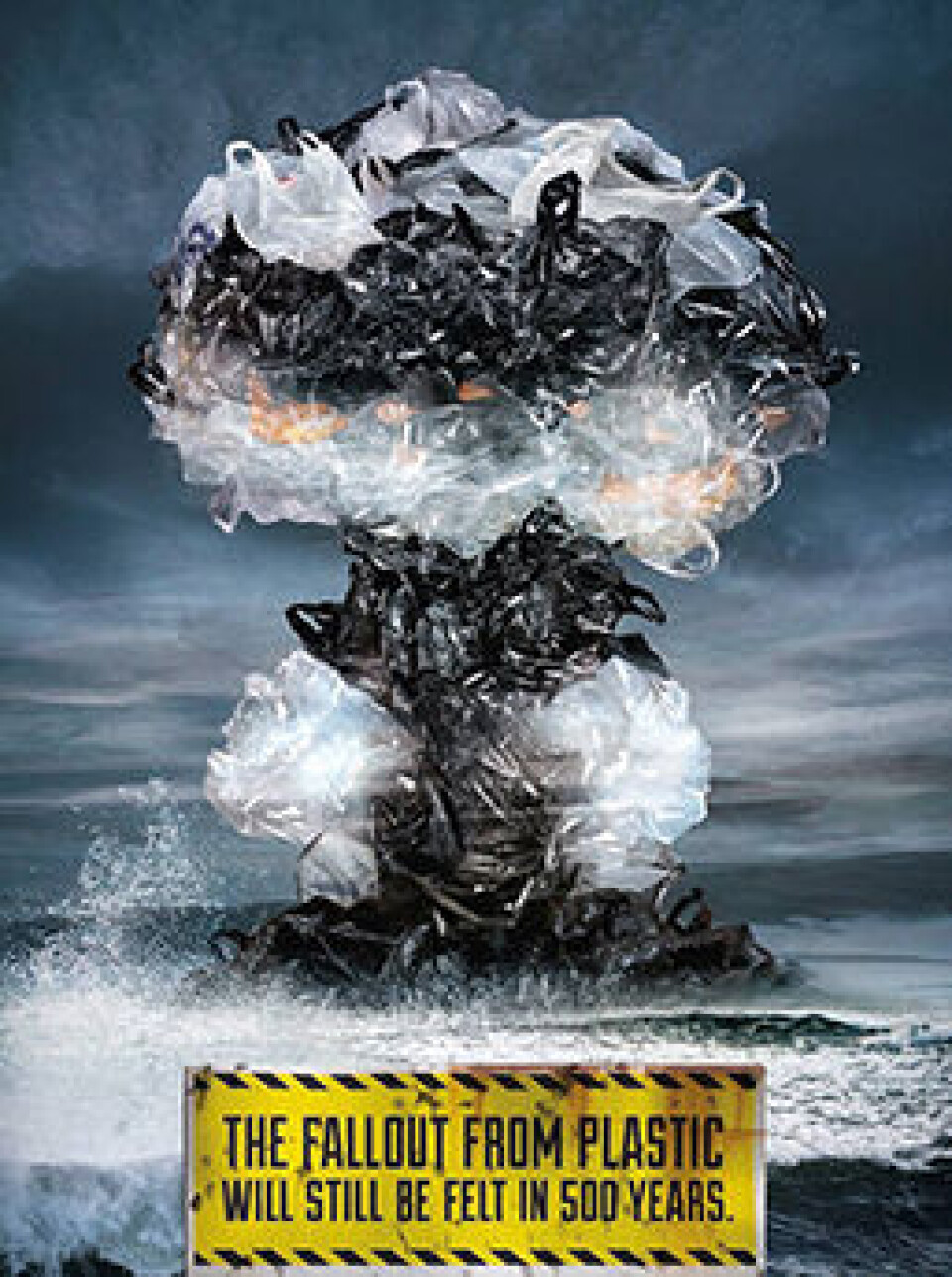THIS CONTENT IS BROUGHT TO YOU BY University of Oslo - read more

How public awareness campaigns can affect our thoughts
Many climate campaigns use both verbal and visual metaphors. According to new research, this can give them particularly persuasive power.
The war against climate change. The expression is so ingrained in our language that we forget it contains a metaphor. But it does: It makes a connection between climate change and war, a war we must win.
The expression is therefore figurative.
Researcher Niamh Anna O’Dowd at the University of Oslo has taken a closer look at the consequences of using metaphors in campaigns aimed at persuading people.

The results have been published in the Metaphor and Symbol journal and on the Sage Journals website.
“It seems that metaphors may have a particularly persuasive power,” O’Dowd says.
Hand grenades and explosions
She has investigated campaigns that aim to create awareness about the environment and climate.
She has studied what type of metaphors are used and how they are represented, both visually and verbally.
O'Dowd has also investigated the effect these campaigns have on the public. She identified two recurring types of metaphors during the study:
One of them made connections between climate change and war, and there were even illustrations of hand grenades or explosions.
The other referred to life in the sea; there were illustrations of floating, jellyfish-like plastic bags suggesting that the sea was empty of life.
Metaphors can make the abstract comprehensible
“Climate change is a topic that is difficult to talk to the public about because it has so many aspects to it. Using metaphors, one can scale down such large and complex fields so that they become more tangible. This is something we often see being done,” O’Dowd says.
In total, she analysed 51 climate campaigns from organisations such as Surfers Against Sewage, Global 2000, and World Wildlife Fund (WWF). Most of them used metaphors in one form or another.
In an online experiment, she presented some of the campaigns she had analysed to a total of 500 study participants. One group looked at campaigns that used war metaphors in pictures and text, and the other group looked at campaigns focusing on life in the sea.
Afterwards, she asked them to explain their thoughts on climate change by answering multiple choice questions and writing their own answers.
The metaphor was reflected in the responses
“When people were exposed to pictures that compared environmental problems to war, it was reflected in their responses. They used more rhetoric that referred to war than the other group,” O’Dowd says.

“They would also broaden the narrative to which they had been exposed, for example, some of the participants also used the concept of war to describe their own feelings,” she says.
For instance, some of the participants said that they felt ‘defenceless’, or that they ‘had to fight this war’. Some of them experienced the situation as ‘a ticking time bomb’.
The group that had looked at the sea-themed campaigns used words such as ‘empty’ and ‘death’ to a greater extent. At the same time, they expressed that the campaigns were more beautiful than the other group did.
Some of the participants felt encouraged or motivated to act after seeing the campaigns, but O’Dowd mentions that others were offended and overwhelmed.
“Political orientation can affect how one reacts. I found this in my study, and it has also been shown in previous research. However, it is not necessarily the case that those who care about climate change react most positively. They can also become more anxious,” she says.
The most important finding is that the way we reflect on things is affected.

“There's something particularly vivid and evocative about metaphors. They get us to reflect on a theme within the framework created by the image,” she says.
A particularly persuasive power
Previous research has suggested that we use metaphors far more often than we realise.
In their book Metaphors We Live By, published in 1980, researchers George Lakoff and Mark Johnson wrote that our everyday speech is so full of metaphors and that we do not even think about them.
Lakoff and Johnson were some of the first to argue that the way we understand metaphors is related to our senses and motor skills.
Researchers at Emory University and the University of Arizona have pointed out that metaphors trigger activity in a multitude of biological neural networks that are associated with sensory experiences and physical actions.
A neural network means that several nerve cells are connected, often to perform a specific function.
For example, if you say that ‘he is sweet’, neural networks associated with taste will be activated; if you say that ‘the rules were stretched’, the same network will be activated as when you stretch your body.
“Today, we are fairly certain that metaphors can trigger responses in the same neural networks that are triggered by physical experiences,” O’Dowd says.
She and several other researchers believe this may make messages conveyed through metaphors particularly persuasive.
“But we don’t yet know whether it increases our willingness to act,” O'Dowd concludes.
References:
Hidalo-Downing, L. & O'Dowd, N.A. Code Red for Humanity: Multimodal Metaphor and Metonymy in Noncommercial Advertisements on Environmental Awareness and Activism, Metaphor and Symbol, vol. 38, 2023. DOI: 10.1080/10926488.2022.2153336
O'Dowd, N.A. The potential of creative uses of metonymy for climate protest, Discourse & Society, 2024. DOI: 10.1177/09579265231222005

This content is paid for and presented by the University of Oslo
This content is created by the University of Oslo's communication staff, who use this platform to communicate science and share results from research with the public. The University of Oslo is one of more than 80 owners of ScienceNorway.no. Read more here.
More content from the University of Oslo:
-
New, worrying trend among incels, according to researcher
-
Ship’s logs have shaped our understanding of the sea
-
New study: The dilemma of copyright in the Global South
-
How your lifestyle affects your risk of bowel cancer
-
Muslims were pagans, according to the Norse sagas
-
How a researcher is working to preserve Arabic music




































